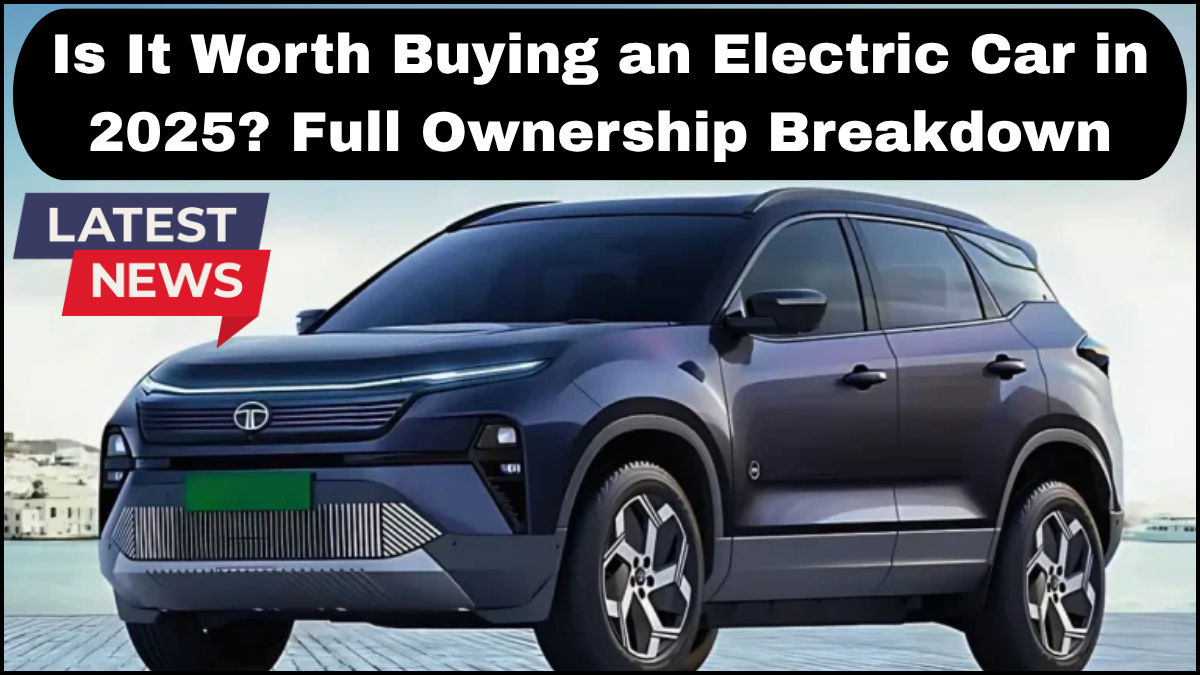Electric vehicles (EVs) have shifted from niche to mainstream over the past decade. In 2025, the question isn’t just if EVs are viable—it’s whether they are worth it. To answer that, we need to go beyond the sticker price and do a full EV ownership cost analysis, including upfront costs, long-term savings, maintenance, tax credits, and the return on investment (ROI). Let’s break it down.

Upfront Costs: Still Higher, But Dropping
In 2025, electric cars still tend to carry a higher MSRP compared to their gasoline counterparts. However, this gap is narrowing quickly. Battery production costs have dropped significantly due to advances in lithium-ion and solid-state technologies. Several affordable EVs are now available under $35,000—notably the Chevrolet Bolt, Nissan Leaf, and the Tesla Model 3.
Federal and state-level incentives still play a big role. Buyers can benefit from tax credits of up to $7,500 in the U.S., and some states offer additional rebates or perks like free tolls or HOV lane access. These benefits can bring the cost of ownership more in line with gas-powered vehicles right off the lot.
Fuel Cost Savings: A Clear Win for EVs
Charging an electric vehicle is far cheaper than refueling with gasoline. On average, EV owners pay the equivalent of $1.25 per gallon for electricity. If you drive 12,000 miles per year, that’s a savings of roughly $800 to $1,000 annually versus gas. If you install solar panels or access off-peak charging rates, the savings can be even greater.
This is where EV ownership cost analysis shows its true value: the lower fuel costs compound over the life of the vehicle, especially as gas prices remain volatile.
Maintenance: Less Frequent, Less Expensive
EVs have fewer moving parts. No oil changes. No spark plugs. No transmission issues. This translates to lower maintenance bills. According to Consumer Reports, EV owners spend about 50% less on maintenance and repairs compared to traditional vehicles. Brake wear is also reduced thanks to regenerative braking systems.
For fleet owners or high-mileage drivers, this adds up quickly, enhancing the long-term ROI & comparison with internal combustion engine (ICE) vehicles.
Battery Life & Replacement Costs
Battery durability was once a top concern. But as of 2025, most EVs come with 8- to 10-year warranties, and real-world performance shows many batteries lasting over 200,000 miles. Replacement costs have also dropped substantially, and the need for a full replacement during the car’s life cycle is becoming rare.
Insurance Costs: Slightly Higher, But Manageable
Insurance premiums for EVs can be slightly higher due to the cost of parts and specialized labor. However, many insurers now offer EV-specific discounts. Additionally, safety features like collision avoidance and autopilot capabilities can qualify for lower rates.
Depreciation Trends
While early EVs depreciated quickly, the market has matured. Established brands now offer EVs with solid resale value, and the secondary market is growing. Tesla, in particular, retains value well, and the increasing demand for used EVs helps offset depreciation risks.
Environmental ROI
Apart from financials, EVs offer a compelling environmental return. Zero tailpipe emissions reduce local air pollution, and when powered by renewable energy, their carbon footprint is drastically lower. For eco-conscious buyers, this non-monetary ROI can be just as important.
Charging Infrastructure: No Longer a Barrier
Public and private investment in EV charging has exploded. In 2025, fast chargers are widespread across major highways, urban centers, and suburban corridors. Home charging options are more accessible than ever, and new developments often include EV-ready garages.
Range anxiety? Not anymore. Most EVs now offer 250-350 miles per charge, more than enough for daily use and road trips.
Full Ownership Cost Comparison: EV vs Gas Car
Let’s run a simplified five-year ownership scenario:
- Upfront cost: EV = $35,000 (after incentives); Gas Car = $30,000
- Fuel: EV = $3,000; Gas = $9,000
- Maintenance: EV = $1,500; Gas = $3,000
- Insurance: EV = $6,000; Gas = $5,500
- Total Ownership: EV = $45,500; Gas = $47,500
Even with a higher initial cost, the EV delivers better long-term value.
Final Verdict: Is It Worth Buying an EV in 2025?
Absolutely. When you consider the full picture—purchase price, fuel, maintenance, insurance, and resale value—the case for EVs is strong. The EV ownership cost analysis reveals a competitive, often superior ROI & comparison to gas-powered vehicles. Add in environmental benefits and a more enjoyable driving experience, and EVs are a smart choice in 2025.
FAQs
Q1: Are EVs still eligible for federal tax credits in 2025?
Yes, most EVs qualify for up to $7,500 in federal incentives, with additional state-level benefits depending on your location.
Q2: What happens if I run out of battery?
Like running out of gas, it’s avoidable with planning. Roadside assistance, portable chargers, and dense public networks make recovery much easier now.
Q3: How long does it take to charge an EV?
Level 2 chargers (home use) can charge a vehicle overnight. Fast chargers can deliver 80% charge in under 30 minutes, depending on the model.
Q4: Are EVs suitable for cold climates?
Yes, though cold weather may slightly reduce range. Modern EVs have heat pumps and preconditioning features to mitigate this.
Q5: Can I install a charger at home?
Most homes can support a Level 2 charger. Installation costs vary but are often offset by state or utility rebates.
click here to learn more
